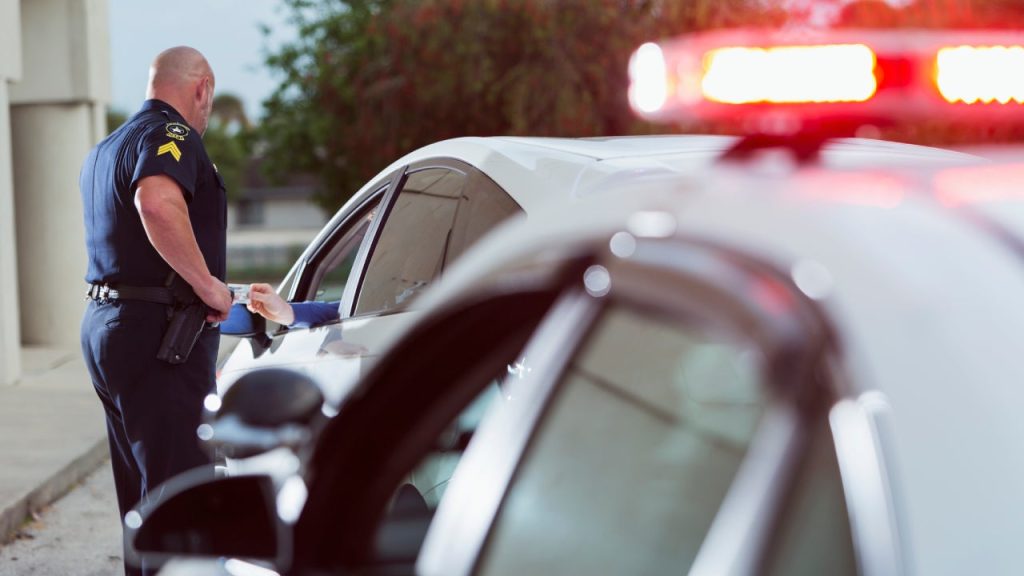Key takeaways
- In addition to serving a license suspension, you may be required to serve jail time, pay fines and fulfill other legal obligations before your license can be reinstated.
- Reinstating your license after a DUI is very context-dependent, meaning the process may differ based on state law, how intoxicated you were, if people were hurt or killed or if property was damaged.
- According to the NHTSA, 113,524 people died in 2022 from alcohol-related traffic deaths.
If you’ve lost your license due to a DUI, you probably understand the severity of the infraction. You likely faced fines or even spent time in jail. However, once you’ve dealt with the consequences, you may be hoping to reinstate your license. Although laws vary by state, you’ll usually have to wait for the suspension period to end and meet your state’s legal requirements before you’re allowed to drive again.
Getting your license back after a DUI
After dealing with the immediate legal consequences of a DUI, the next step for many drivers is finding out how to regain their license. Below is a list of prudent steps that may help with getting your license back after a DUI.
Wait out the suspension period
Typically, license suspension refers to a set period of time when a driver is not permitted to operate a vehicle. Suspension periods vary on a state-by-state basis but can be anywhere from a few months to several years. You must wait out the entirety of your license suspension period before applying for license reinstatement. In some instances, you might be eligible for a hardship license during your suspension period. However, this license only allows you to drive to essential activities like commuting to work or attending rehabilitation.
Some DUIs may result in a license revocation. In that case, you will also have to wait out the revocation period. Unlike a suspended license, a revoked license cannot be restored. Instead, you would need to apply for a new license altogether.
Serve jail sentence, if necessary
Each state has its own rules and regulations regarding drunk driving. In many states, a DUI can lead to an arrest and possible jail time for repeat offenders. However, first-time offenders may have to serve jail time if they have an unusually high blood alcohol content (BAC). Depending on the state, a DUI may come with a mandatory minimum sentence or a judge may have more leeway in determining an offender’s punishment.
If a drunk driver kills or injures someone, that driver may face prison time regardless of whether or not they have prior convictions. If your DUI conviction requires you to serve jail time, you will need to complete your sentence before you are able to get your license back.
Pay fees
The cost of a DUI can get expensive quickly. Fines typically range between $500 to over $2,000, and drivers with higher BACs will likely pay more expensive fines. Offenders may also be required to purchase equipment such as interlock devices (IIDs) out of pocket. These devices require a driver to test their BAC before starting the engine and disable the vehicle if the driver’s BAC is higher than a certain level. Bail may also apply and typically runs about $150. All fees must be paid before beginning the reinstatement process.
Complete a DUI program
A critical step in reinstating your driver’s license after a DUI is completing an approved DUI course. Course curriculums focus primarily on drug and alcohol education, and course length will likely depend on your driving history, plus the rules in your state. If it is your first DUI offense, your course will likely be shorter than one for someone who is a repeat offender. Courses can last between 30 days to one year and could cost around $500. Some states also require drivers to complete a defensive driving course in order to be eligible for reinstatement.
Obtain SR-22 or FR-44 insurance
After a DUI, your car insurance provider may require you to obtain an SR-22 or FR-44 certificate, which your insurer files on your behalf with the motor vehicle department. It serves as proof of financial responsibility, certifying that you meet the state’s minimum insurance requirements.
In the wake of a DUI, your car insurance premium will likely jump exponentially. Drivers with a DUI typically pay an average of 92 percent more for full coverage (or 97 percent more for a minimum coverage policy). To give you an idea of how much you might pay for full coverage, drivers with a DUI pay an average of $4,713 per year compared to drivers with clean records who pay an average of $2,458 per year.
If your insurance is canceled, you’ll likely want to find a provider that offers car insurance for drivers with a DUI. Many well-known insurers offer high-risk auto insurance, but rates may vary from carrier to carrier based on several factors, which is why it’s typically worth it to get quotes from several.
Apply for reinstatement
Each state has its own requirements for license reinstatement, so you may want to research your state’s regulations. Offenders will likely have to pay the court a reinstatement fee, which typically ranges between $50 and $200, depending on the state. Some offenders may choose to hire a DUI lawyer to argue their case in court. In some states, offenders must request a hearing for license reinstatement, which may be approved or denied by the Department of Motor Vehicles (DMV) or court. For further details on the specific steps where you live, refer to the DMV website.
Key DUI statistics
The following drunk driving statistics illustrate the immense toll that driving under the influence can take on individuals and communities.
- In the U.S., one alcohol-related driving death occurs every 39 minutes. (NHTSA)
- 13,524 people died in 2022 from alcohol-related traffic deaths, up from 13,384 in 2021. (NHTSA)
- California, Texas and Florida report the highest percentage of fatal accidents caused by drunk driving. (NHTSA and Bankrate)
- In 2022, the 21 to 24 age group accounted for the most alcohol-related traffic deaths. (NHTSA)
- In 2020, drinking and driving deaths cost around $123.3 billion in medical costs and damages. (CDC)
- To reach the legal level of intoxication, it typically takes a 180-pound man four drinks and a 120-pound woman two drinks. (University of Colorado Boulder)
- Over 53% of survey respondents said they feel capable of driving after consuming alcohol, with 10% of those respondents having previously received a DUI. (American Addiction Centers)
How do you get your license back after a second DUI?
A driver’s first DUI presents several hurdles, but a second DUI often makes legal troubles exponentially worse. In some states, a driver’s first DUI may be considered a misdemeanor or even a civil infraction, which is less serious than a misdemeanor. However, after a second offense, penalties typically become more intense.
The process for getting your license back after a DUI the second time around will mirror the process for a first-time offender. But, fines will likely be higher and your alcohol education course will likely be longer. Additionally, your license revocation period will be longer. Exact processes will depend on your state, so you may want to consult your state’s DMV website for more information.
A DUI usually stays on your record for between five and 15 years, although the exact timeframe will depend on your state and circumstances. In many states, a DUI remains on your record forever. Certain states offer the option of expungement if you’re a first-time offender or a minor. You may want to research your state’s laws to nail down your exact options.
Frequently asked questions
Read the full article here












